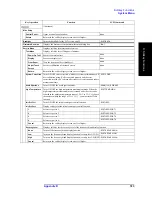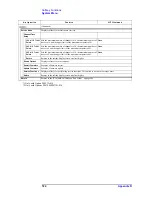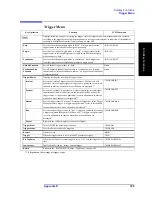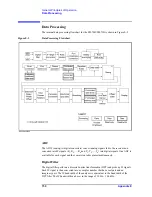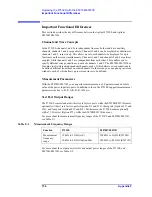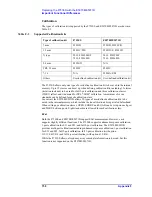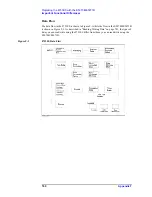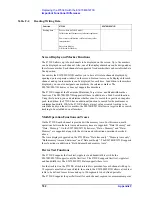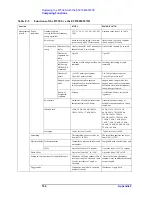
732
Appendix E
General Principles of Operation
Data Processing
Corrected Data Array
Unlike the raw data array, this array stores the results obtained after error corrections, port
extensions, or the fixture simulator functions are applied. The user is allowed to read/write
data from/to the corrected data array.
Corrected Memory Array
By pressing
-
Data
→
Mem
, the contents of the corrected data array will be copied
to this array. The user is allowed to read/write data from/to the corrected memory array.
Equation Editor
Data processing is carried out by creating a equation based on the corrected data array.
Data Math
Data processing is carried out using the corrected data array and the corrected memory
array. Four types of data processing – addition, subtraction, multiplication, and division –
are available.
Electrical Delay/Phase Offset
An electrical delay and a phase offset are applied to each trace. By setting an electrical
delay, a linear phase that is proportional to the frequency will be added or subtracted. On
the other hand, setting a phase offset adds or subtracts a phase that is constant throughout
the frequency range. Incidentally, data processing performed from this point on in the
flowchart is applied to both the data array and the memory array.
Data Format/Group Delay
Complex data consisting of the real parts and the imaginary parts are converted into scalar
data according to the data format of user’s choice. Group delays are also calculated here.
Smoothing
By enabling the smoothing function, each point in a sweep measurement will be replaced
by a moving average of several measurement points nearby. The number of points used in
calculating a moving average is determined by the smoothing aperture set by the user. The
smoothing aperture is defined by a percentage against the sweep span.
Formatted Data Array/Formatted Memory Array
All results from data processing are stored in the formatted data array and the formatted
memory array. The marker functions are applied to these arrays. The limit test is applied to
the formatted data array. The user is allowed to read/write data from/to these arrays.
Offset/Scale
Each set of data is processed so that traces can be drawn on the screen. Particular scaling
depending on the data format is applied using the position of the reference line, the value of
the reference line, and the scale/graticule settings.
Summary of Contents for E5070B
Page 6: ......
Page 30: ...24 Contents ...
Page 34: ...28 Chapter1 Precautions Before contacting us ...
Page 286: ...280 Chapter6 Data Analysis Using the Equation Editor ...
Page 430: ...424 Chapter12 Optimizing Measurements Performing a Segment by Segment Sweep segment sweep ...
Page 538: ...532 Chapter15 Measurement Examples Executing Power Calibration ...
Page 634: ...628 AppendixB Troubleshooting Warning Message ...
Page 732: ...726 AppendixD Softkey Functions Trigger Menu ...
Page 740: ...734 AppendixE General Principles of Operation Data Processing ...
Page 760: ...754 AppendixF Replacing the 8753ES with the E5070B E5071B Comparing Functions ...






